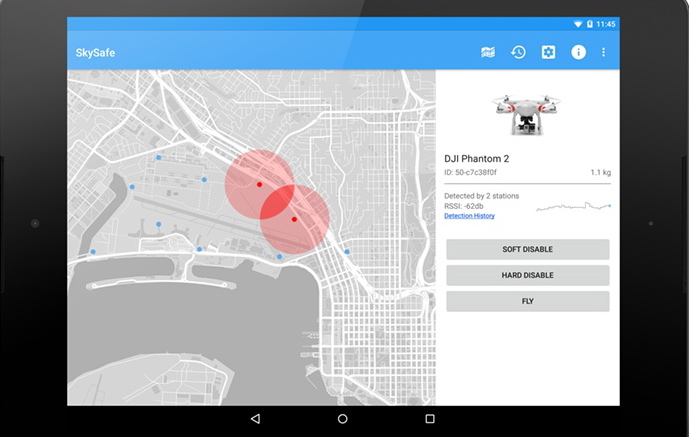Daily Business Report-Nov. 24, 2017
The state has awarded about 15 percent of the tax credits to service professionals such as hair stylists, plumbers, insurance agents and doctors, giving them an advantage over their competitors in the same market.
What New Jobs?
California Program to Entice Hiring Fails
By Judy Lin | CALmatters
Four years after Gov. Jerry Brown launched his signature program to boost California jobs by awarding tax credits to the businesses that create them, businesses have left two thirds of those available credits unclaimed — a sign that most expected jobs have yet to materialize.
Nor can the state say for sure how many of the administration’s 83,414 projected jobs over five years have actually been created. State offices responsible for awarding and monitoring the California Competes tax credits say they aren’t keeping count.
And an independent analyst warns that some of the governor’s incentives that have been put to use may inadvertently be picking winners and losers within California. The state has awarded about 15 percent of the tax credits to service professionals such as hair stylists, plumbers, insurance agents and doctors, giving them an advantage over their competitors in the same market.
Administration spokesman Sid Voorakkara said the governor stands by California Competes, calling the program a “vital tool to support businesses.” Asked why more companies aren’t taking advantage of the tax credit, Voorakkara said it may be too early to tell because businesses have five years to meet their hiring targets, and there may be tax advantages for waiting to claim the credit.
One economic development expert, however, said he doesn’t expect the claim rate to improve any time soon, given that businesses have been doing brisk hiring these past few years.
“I don’t expect the early results that we’ve seen are just a matter of the program not being a full implementation,” said Micah Weinberg, president of the Bay Area Council Economic Institute, a think tank focused on economic issues facing Silicon Valley. “I think the results that we’ve seen are the nature of the results we should expect from that program.”
The California Competes program was launched in 2014 to help California businesses stay in the state and grow by offering variable amounts of tax credit based on the number of full-time jobs they create and how much a company seeks. Credits vary but typically amount to several thousand dollars per new job. So far, the Governor’s Office of Business and Economic Development (GO-Biz) has awarded $622.8 million to 865 companies.
GO-Biz touts the program as projected to create 83,414 jobs the next several years but the Franchise Tax Board, the state entity responsible for reviewing awards, isn’t tracking the number of new jobs. Tax board spokesman Jacob Roper said publishing a job-creation tally at this stage “wouldn’t necessarily capture all the successful milestones of the program.”
“Perhaps it would benefit everyone if we had some aggregation so we can evaluate how effective the program is,” said Assemblyman Jay Obernolte, R-Big Bear Lake, vice chair of the Assembly Budget Committee.
The jobs program was authorized with bipartisan support in 2013 as part of an overhaul of the state’s economic development strategy. California eliminated a three-decade-old enterprise zone program after finding it simply shifted jobs from one part of the state to another without creating a net increase in jobs.
The state replaced it with three economic programs, including California Competes, to improve the state’s business climate, which despite robust growth was recently ranked 28th in a CNBC state-by-state scorecard. In addition to California Competes, the Legislature authorized a sales tax exemption on manufacturing and research and development equipment, and hiring credits for businesses in areas with high unemployment and poverty.
So far, a lot of California businesses appear to be having a hard time using Brown’s economic development program. Of the $50 million that was available to be used in 2014 and 2015, the tax board reported 377 companies claimed just $15.7 million — less than a third of the credit eligible to be claimed for those years. The amount is low compared to the total handed out because the program was just being launched and the credits are spread out over several years. Information wasn’t yet available for the 2016 tax year.
The Legislature’s nonpartisan fiscal analyst finds that low.
“Based on the terms of the tax credit agreements, we anticipated somewhat larger amounts,” wrote the Legislative Analyst’s Office in a recent review. Either businesses haven’t hit their hiring targets or they are deliberately carrying the credit forward to claim on taxes later. The law allows businesses to carry the remaining amount forward for five tax years.
Some business owners say the credit isn’t big enough and should have asked for more. Matt Pentecost, owner of Sac Surface Pro, a tile cleaning service in the Sacramento area, applied for the credit and was awarded $30,000 back in April 2015. The award was handed out on the condition that he add three full-time workers within the next five years.
His tax credit works out to $6,000 a year, which he says isn’t enough of an incentive to hire; small businesses often struggle to pay salary, workers comp and employment taxes that can add up to more than $75,000 per worker.
“To be honest with you, I haven’t been able to take advantage of it at this point,” Pentecost said. “All it is at this point is a little more of a negative for me because I spent a lot of time setting this up and now that I actually signed up for it, I have to submit paperwork every year.”
Still, he hopes to use at least some of the credit before it runs out. He recently hired two employees and is in the process of training them.
Some large companies say they have quickly met or exceeded their hiring targets.
Amazon, the online retailing giant, was awarded nearly $1.6 million in tax credits for adding 1,550 jobs at warehouse and distribution centers in Moreno Valley, Tracy, Newark and San Bernardino. An Amazon spokesman said it has hired more workers than promised.
Northrup Grumman, the state’s largest aerospace employer, can claim $10 million for adding 1,359 jobs in Southern California. Northrup spokesman Tim Paynter said the aircraft manufacturer also expects to use all its credits.
Despite hiring and growing, companies such as Tesla may not have had a chance to claim its $15 million credit because the premium electric car maker has only reported a few quarters of profitability. The program is structured so that the credits are used to offset taxes owed.
But 21 businesses, including IBM, Honeywell and Novartis Pharmaceutical, have decided not to use their credits. Voorakkara, a spokesman for GO-Biz, said companies can end their agreements if the company isn’t growing fast enough, gets sold, goes out of business, or changes its business plan. The state can choose to award those unused credits to other employers.
It’s important to note that when businesses contemplate creating new hiring positions, they take into account many factors, including access to market, workforce, transportation and even the quality of schools. People shouldn’t expect too much from tax incentives, said Weinberg of the Bay Area Council Economic Institute.
“The California Competes tax incentive is a fine arrow to have in our quiver but we also need to be very realistic about the extent to which incentives are a big part of siting decisions,” Weinberg said.
The Legislative Analyst says the governor’s economic development program could do a better job of increasing economic activity in the state by limiting the tax credits to employers that export goods and services outside California. That would help avoid the risk that the state is picking winners at the expense of their local competitors.
Obernolte, the Republican lawmaker, said he would support such a change when California Competes comes up for reauthorization. The program was authorized for 10 years and will expire in 2025.
The Brown administration says it’s open to suggestions but wants to make sure small businesses retain access to tax credits. GO-Biz has conducted more than 200 in-person and online workshops since 2014.
“Given that the needs of regional economies vary, the program is accessible to small businesses that address local needs and also to businesses that operate at the national and international level,” Voorakkara said.
For now, even the few California small businesses that bothered to go through the application and annual reporting process haven’t necessarily used it.
Niko Pikios, owner of Midtown Autoworks in Sacramento, said he hasn’t claimed any of the $45,000 tax credit approved back in January 2015 simply because he hasn’t found the right mechanic for his shop, which specializes in Porsches and Mercedes.
“We’re having a hard time finding somebody with the skillset that we need,” Pikios said.
_______________
Median Sales Price for a Single-Family
Home in North County Reaches $680,000
The median sales price for a detached single-family home in North San Diego County reached $680,000 in October, which was 4.6 percent higher than the $650,000 price in October 2016, according to a just-released housing market report from the North San Diego County Association of Realtors.
The October 2017 figure for detached homes is nearly the same as the year-to-date median sales price of $675,000.
For attached homes, the median home price in the North County was $413,500 in October, a 2.1 percent increase compared to the $405,000 price the same month a year ago, the report said. The October 2017 figure for attached homes is similar as the year-to-date median sales price of $430,000.
“Last year at this time, the storyline was how high demand was propping up sales and prices despite low inventory,” said Michael Carunchio, association president. “Today, home prices have reached nearly unaffordable levels for many new potential homebuyers while established owners are less interested in moving.”
Additional findings from October’s report:
- The average number of days for a North County home on the market (the time between when a property is listed and an offer is accepted) was 36 days for detached homes and 25 days for attached homes. In October 2016, the numbers were 38 and 32 days, respectively. In September 2017, the numbers were 33 and 23 days, respectively.
- Closed sales totaled 841 detached units in October, an 11.6 percent year-over-year drop compared to the 951 units sold in October 2016. For attached home sales, closed sales totaled 345 in October, a 12.2 percent change from October 2016’s total of 393.
“Although inventory levels are low in many neighborhoods, there has been enough listing activity to keep prices from skyrocketing towards another bubble,” said Carunchio. “However, with a healthy economy and high level of demand, plus growing job creation, sellers will be hard-pressed to lower prices.”
Click here for the full report.
_______________
New Chemistry Method Simplifies Discovery
and Development Process for Many New Drugs

Chemists at The Scripps Research Institute have invented a technique that overcomes a long-standing problem in organic chemistry and should streamline the process of discovery and development for many new drugs. The technique, known as ligand-accelerated non-directed C–H functionalization, is expected to find application not just in the pharmaceutical chemistry industry but also in a wide range of other chemical industries. However, it should be particularly useful for altering complex candidate drug molecules to find versions with optimal therapeutic properties.
“One can use this new technology to modify a drug molecule at a late stage of synthesis, to improve the molecule’s properties without having to go back to change the synthesis from the beginning,” said study senior author Jin-Quan Yu, professor in the Department of Chemistry at TSRI.
The new method, reported this week in the journal Nature, was developed by Yu’s laboratory in collaboration with scientists at Bristol-Myers Squibb, who are already applying the method in their drug development programs.
_______________
Intel Deepens Move into Sports Tech
With ScoreStream Investment
ScoreStream, a five-year-old startup that created a social media platform for crowd-sourcing local sports scores, has raised $3.7 million in a Series A round that includes Intel Capital as an investor. Read more
_______________
San Diego County Ranks 3rd in
State with Life Sciences Jobs
Employment in San Diego County’s life sciences industry eclipsed Orange County for the first time, ranking the region No. 3 in the state, says the latest report from the California Life Sciences Association, a public policy trade group. Read more
_______________
City Attorney’s Office Awarded
Special Drug DUI Prosecution Grant
Drivers arrested for being under the influence of drugs in the city of San Diego can expect to face highly trained, specialized prosecutors, funded by a $294,414 grant from the California Office of Traffic Safety, the City Attorney’s Office said Wednesday. The grant to the City Attorney’s Office will continue to fund a team that works drug DUI cases from arrest through conviction and sentencing.
The program is designed to prevent impaired driving and reduce drug-impaired traffic fatalities and injuries. In 2014, there were 79 deaths and 2,154 serious injuries as a result of DUI crashes in the County of San Diego.
Prosecution team members will work with California’s Traffic Safety Resource Prosecutor Training Network to expand knowledge and resources in the office by obtaining and delivering specialized training, including the emerging problem of drug-impaired driving. Team members will share information with peers and law enforcement throughout the county and state.
Funding for the program comes from a grant by the California Office of Traffic Safety, through the National Highway Traffic Safety Administration.




